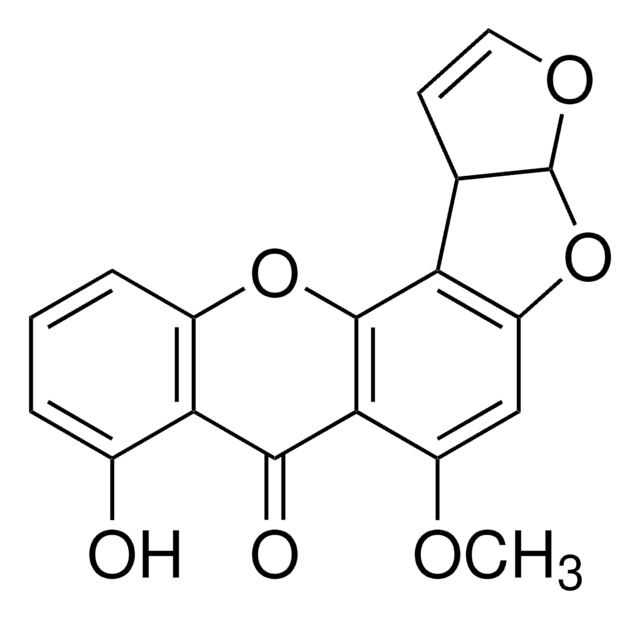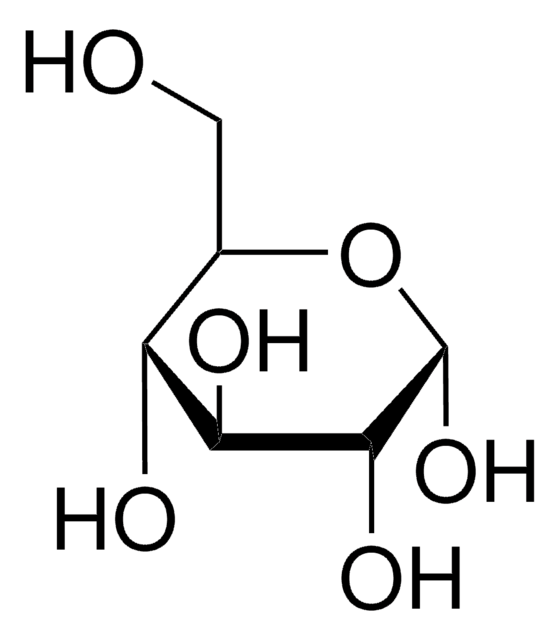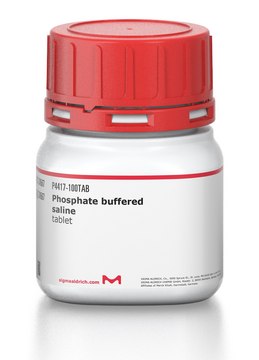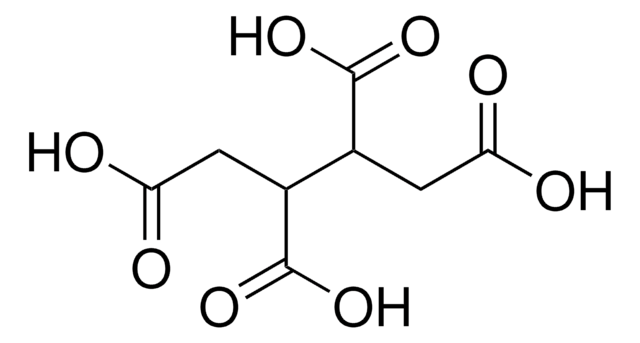S5012
Sodium hypophosphite monohydrate
≥99%
Synonym(s):
Sodium hypophosphite 1-hydrate, Sodiumphosphinite
Sign Into View Organizational & Contract Pricing
All Photos(3)
About This Item
Linear Formula:
NaH2PO2 · H2O
CAS Number:
Molecular Weight:
105.99
EC Number:
MDL number:
UNSPSC Code:
12352302
PubChem Substance ID:
NACRES:
NA.22
Recommended Products
Quality Level
Assay
≥99%
form
powder, crystals or chunks
pH
(6,0 - 8,0 at 50 g/l at 25 °C (77 °F))
solubility
water: 100 mg/mL, clear, colorless
SMILES string
O.[Na+].[O-][PH2]=O
InChI
1S/Na.H3O2P.H2O/c;1-3-2;/h;3H2,(H,1,2);1H2/q+1;;/p-1
InChI key
PLZNPHDJGFDNRM-UHFFFAOYSA-M
Looking for similar products? Visit Product Comparison Guide
Related Categories
Application
Sodium hypophosphite monohydrate can be used as a:
- Reducing agent in the synthesis of nickel nanoparticles (NiNP) from nickel acetate tetrahydrate under microwave irradiation.
- Hydrogen donor in the enantioselective transfer hydrogenation of aliphatic and aromatic ketones to corresponding alcohols in presence of ruthenium catalyst.
- Catalyst in esterification of spent grain to improve heavy metal ions adsorption capacity using N,N-dimethylformamide (DMF) as a solvent.
Storage Class Code
11 - Combustible Solids
WGK
WGK 2
Flash Point(F)
Not applicable
Flash Point(C)
Not applicable
Personal Protective Equipment
dust mask type N95 (US), Eyeshields, Gloves
Choose from one of the most recent versions:
Already Own This Product?
Find documentation for the products that you have recently purchased in the Document Library.
Microwave assisted greener synthesis of nickel nanoparticles using sodium hypophosphite.
Eluri R and Paul B
Materials Letters, 76, 36-39 (2012)
Biphasic Glycerol/2-MeTHF, Ruthenium-Catalysed Enantioselective Transfer Hydrogenation of Ketones Using Sodium Hypophosphite as Hydrogen Donor.
Guyon C, et al.
European Journal of Organic Chemistry, 2013(24), 5439-5444 (2013)
Fast esterification of spent grain for enhanced heavy metal ions adsorption.
Li Q, et al.
Bioresource Technology, 101(10), 3796-3799 (2010)
Qiuran Jiang et al.
Journal of biomedical materials research. Part A, 101(5), 1237-1247 (2012-09-26)
Cytocompatible and water-stable ultrafine collagen fibers were electrospun by dissolving collagen in a low corrosive ethanol-water solvent and crosslinked by citric acid (CA) with glycerol as the crosslinking extender. Conventional solvents used for electrospinning of collagen either cause denaturation or
Efficient large-scale radical deoxygenation in alcoholic solvents using sodium hypophosphite and a phase-transfer agent: application to erythromycins.
A E Graham et al.
The Journal of organic chemistry, 65(8), 2583-2585 (2000-05-02)
Our team of scientists has experience in all areas of research including Life Science, Material Science, Chemical Synthesis, Chromatography, Analytical and many others.
Contact Technical Service







